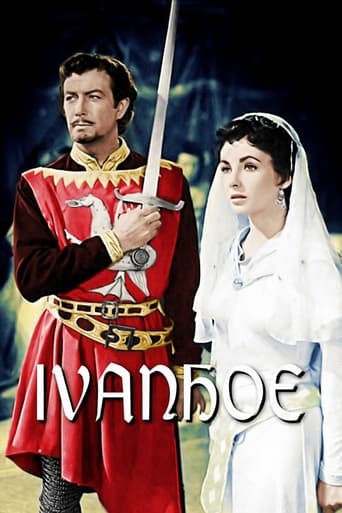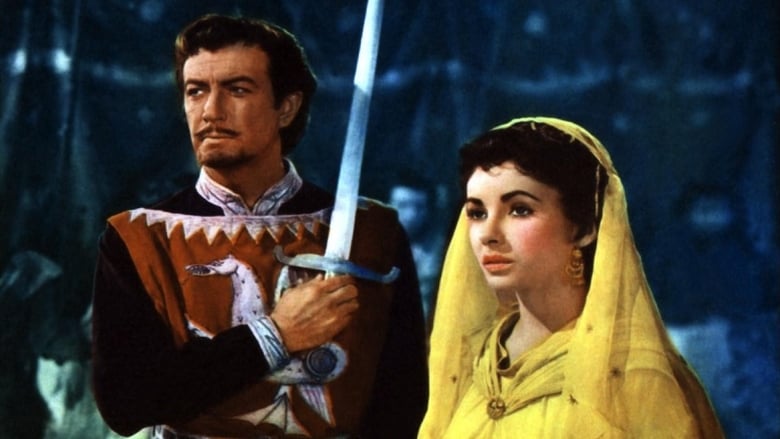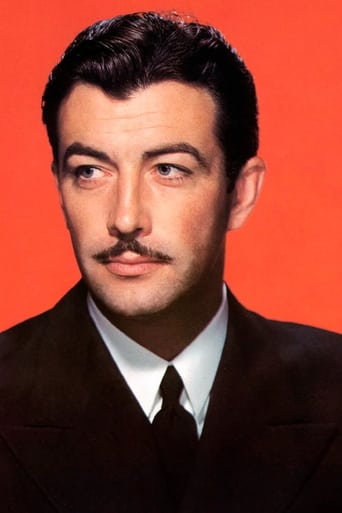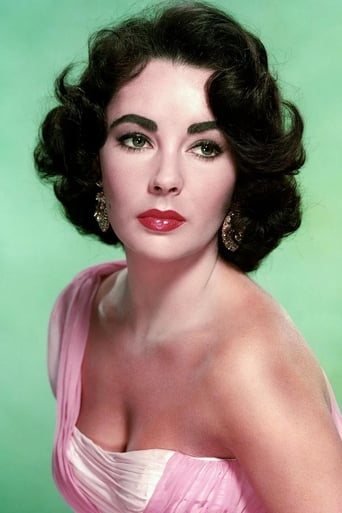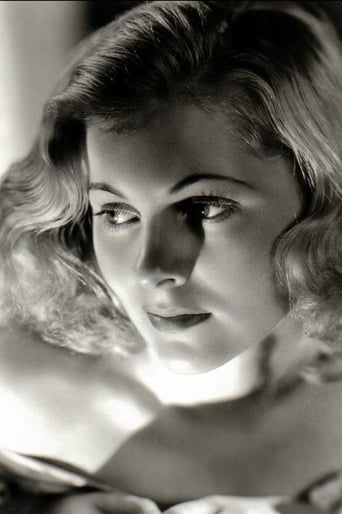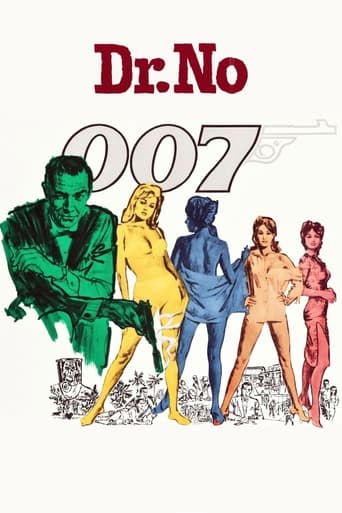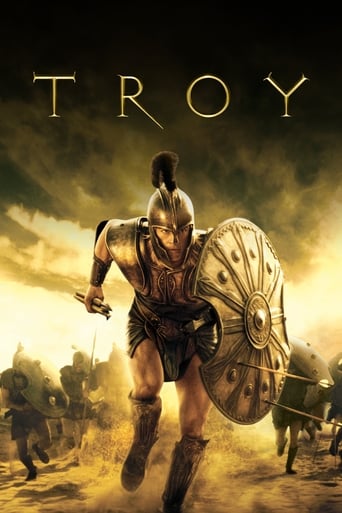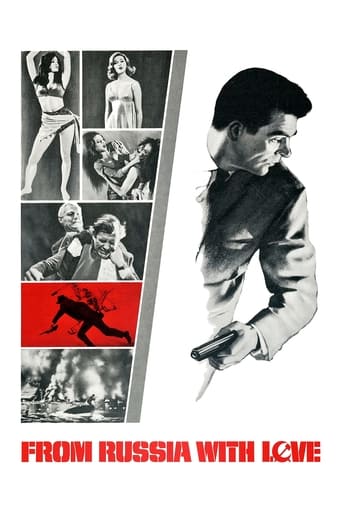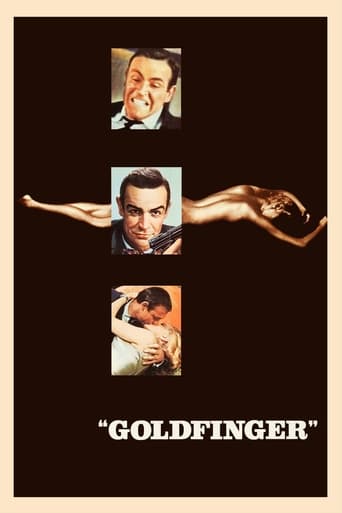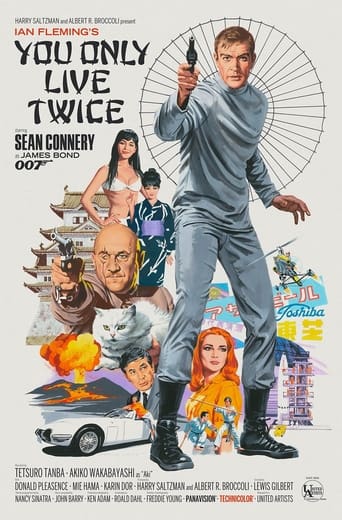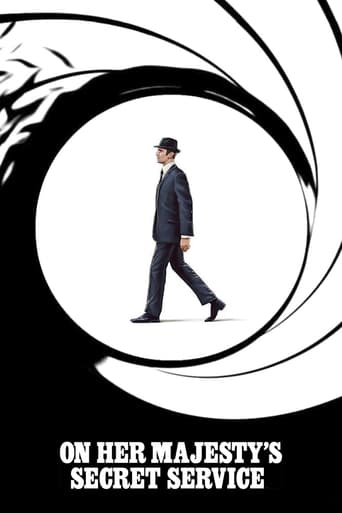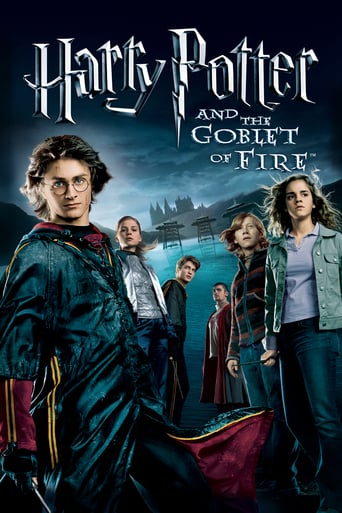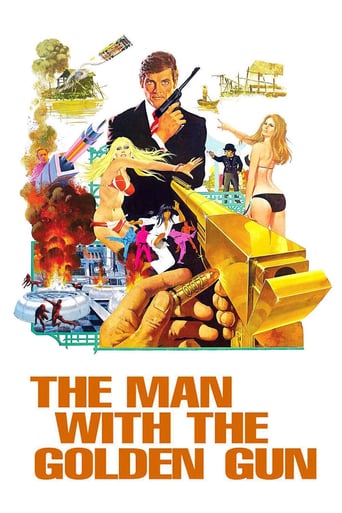Ivanhoe (1952)
Sir Walter Scott's classic story of the chivalrous Ivanhoe who joins with Robin of Locksley in the fight against Prince John and for the return of King Richard the Lionheart.
Watch Trailer
Cast


Similar titles
Reviews
Am i the only one who thinks........Average?
A Major Disappointment
It's fun, it's light, [but] it has a hard time when its tries to get heavy.
A terrific literary drama and character piece that shows how the process of creating art can be seen differently by those doing it and those looking at it from the outside.
Singing coach for Mr Taylor: Arthur Rosenstein. Archery coach: Colonel John M.T.F. Churchill. Produced by Pandro S. Berman at M-G-M's Elstree Studios in England and on location in Hatfield Woods. Copyright 30 June 1952 by Loew's Inc. A Metro-Goldwyn-Mayer picture. New York opening at the Radio City Music Hall: 31 July 1952 (ran 8 weeks). U.S. release: 20 February 1953 (sic). U.K. release: 13 September 1952. Australian release: 15 August 1952. 9,595 feet. 106 minutes. (Available on an excellent Warner DVD).NOTES: Nominated for the following prestigious Hollywood awards: Best Picture (won by The Greatest Show On Earth), Color Cinematography (won by The Quiet Man), Music Scoring of a Drama or Comedy (won by High Noon). With gross rentals of $6.3 million, number 4 at U.S./Canadian ticket windows for 1952. The film also took the number 4 position at the U.K. box-office. Perhaps because it was released for the winter-spring school holidays, the movie did far less business in Australia, though it did come in at the latter end of the top fifty box-office successes.COMMENT: The general impression that Ivanhoe is a schoolboy's movie is not borne out by the film itself. Crammed full of violent, exciting action in a fast-paced plot set in motion by a wonderfully dastardly trio of villains - superbly characterized by George Sanders, Robert Douglas and Guy Rolfe - Ivanhoe has been produced on a splendidly lavish scale that often staggers the senses. This is not to say that the actors are overwhelmed by pageant and panoply (though they do skilfully stand aside whilst hundreds of stuntmen do yeomen service in the many battle and siege scenes). True, Robert Taylor sometimes looks a trifle uncomfortable and out-of-place in medieval armor, but this clumsiness is due more to Thorpe's lack of competence in camera placement than to any deficiency of charisma on Taylor's part. Mostly he performs his chores with such dash, we forget his incongruous American accent. It's British-born Elizabeth Taylor who seems to have the wrong voice for the part (though she looks the beauty well enough).
"Ivanhoe" was one of a trilogy of films on mediaeval subjects made by director Richard Thorpe and producer Pandro S. Bermans for MGM in the early 1950s; the others were "The Knights of the Round Table" and "The Adventures of Quentin Durward" which, like "Ivanhoe", was based upon a novel by Sir Walter Scott. All three films shared the same leading man, Robert Taylor. Hollywood was going through something of a romance with the Middle Ages during the fifties, "The Black Shield of Falworth" being another example. The reason was doubtless that producers were attracted by the colourful pageantry of the era at a time when the cinema needed to make maximum use of spectacle as a weapon in its battle with television. The story is essentially a variant on the Robin Hood legend. Although Robin appears in the film, the main character is Wilfred of Ivanhoe, one of England's few remaining Saxon aristocrats. Ivanhoe, who has fought with Richard the Lionheart in the Crusades and has become estranged from his father, Cedric, who objects to his son fighting for a Norman king. (I have often wondered about the historical accuracy of Scott's basic premise; I would have thought that, by the late twelfth century, a century and a quarter after the Conquest, any surviving Saxon noble families would have become culturally indistinguishable from their Norman neighbours). There are two interconnected strands to the plot. One concerns Ivanhoe's attempts to prevent Richard's treacherous brother, Prince John, from usurping the crown. Richard is being held hostage by Leopold of Austria, and Ivanhoe needs to raise an enormous sum to ransom him. The second strand concerns a love-triangle; Ivanhoe is in love with his father's ward, the Lady Rowena, but is loved by Rebecca, the beautiful daughter of a rich Jewish merchant. The triangle becomes a rectangle when the Norman knight Sir Brian de Bois-Guilbert falls in love with Rebecca. Rebecca is played by a young Elizabeth Taylor who, apparently, felt she had been miscast in the role and would have preferred to have been cast as Rowena. Yet although it is Rowena who eventually wins the heart of the hero, it is Rebecca who has more screen-time and is the more complex character, an educated woman who has studied medicine and a courageous heroine who refuses to renounce her Jewish faith under persecution. This was one of Taylor's more interesting films in the early fifties, not the most distinguished period in her career and a time when producers seemed keener to cast her as eye-candy than in substantial roles, that other historical drama "Beau Brummell" being a good example. To my mind it was Joan Fontaine as Rowena who seemed miscast, being too old for the part. (The mediaeval nobility generally married young; a thirty-five year-old spinster would have been regarded as destined to die an old maid). Elizabeth's unrelated namesake Robert is good in the leading role, although the best performance among the male cast members comes from George Sanders. Sanders was often good as a villain, and at first it seems that the arrogant aristocrat Bois-Guilbert will turn out to be another such character. Yet Sanders shows us that Bois-Guilbert, unlike Guy Rolfe's Prince John, is not altogether villainous; he achieves a certain redemption through his love for Rebecca and his attempts to protect her from her persecutors. The characterisation, particularly of Rebecca and Bois-Guilbert, is surprisingly deep for a film of this nature, but "Ivanhoe" is nevertheless essentially an adventure film, and I suspect that most of its original audience in 1952 would have watched it for excitement and spectacle, not in order to analyse its character development. Fortunately, the film is not lacking in these departments either, and there are some splendid action sequences, particularly the attack on the castle and the final duel between Ivanhoe and Bois-Guilbert. The result is a highly entertaining adventure, as watchable today as it was sixty years ago. I am not surprised that it earned a "Best Picture" Oscar nomination. 7/10 Some goofs. At the beginning of the film we see the Royal Arms of England with the now-familiar lion and unicorn supporters. In fact, supporters were not used in heraldry until the fourteenth century and the unicorn was not added to the Royal Arms until the Union of Crowns with Scotland in 1603. Why is Rebecca's father referred to as "Isaac of York" when he comes from Sheffield? We see a church in Sheffield with a "Rhenish Helm" tower, a continental style of architecture unknown in England apart from one isolated example in Sussex. More seriously from the point of view of the plot, Rebecca is sentenced to be burnt as a witch, even though witchcraft was not regarded as a crime in the twelfth century. (The great era of witch-hunts did not begin until the early fifteenth century; in the earlier Middle Ages the Church regarded belief in witchcraft as an un-Christian superstition). This particular goof, however, originated in Scott's novel, and the film-makers clearly did not want to depart from his plot too radically.
An excellent movie, well acted, great story, and fantastic cinematography. George Sanders and Guy Rolfe steal the show as the two bad guys who want to shake down an entire kingdom, and are stopped by one man. Elizabeth Taylor and Joan Fontaine are beautiful and give outstanding performances. There was a time when Hollywood could produce epics without the use of special effects and this movie is a classic proof of that. The fight scenes are especially impressive, both close quarter and wide angle. In addition, the dialog is snappy, with no words wasted, as the action plays out. This movie also provides a glimpse of the plight of the Jews in the middle ages and to the friction between the Saxons and Normans. Far from being a two-dimensional action movie, Ivanhoe tells a compelling story about England in the middle ages and of the people who lived at the time.
This is a stiffly performed, though good-looking adaptation of Walter Scott's popular Medieval novel. Handsome noble Robert Taylor (as Ivanhoe) gets to play with the emotions of two beautiful women, Jewish Elizabeth Taylor (as Rebecca) and Anglo Joan Fontaine (as Rowena). The performances get better as you go down the cast list. The score (Miklos Rozsa), cinematography (Freddie A. Young), and film (Pandro S. Berman) were nominated at "Academy Awards" time, with "Film Daily" and the "Director's Guild" adding honorable mentions for Richard Thorpe. His swashbuckling and chase scenes are certainly entertaining.****** Ivanhoe (7/31/52) Richard Thorpe ~ Robert Taylor, Elizabeth Taylor, Joan Fontaine, George Sanders

